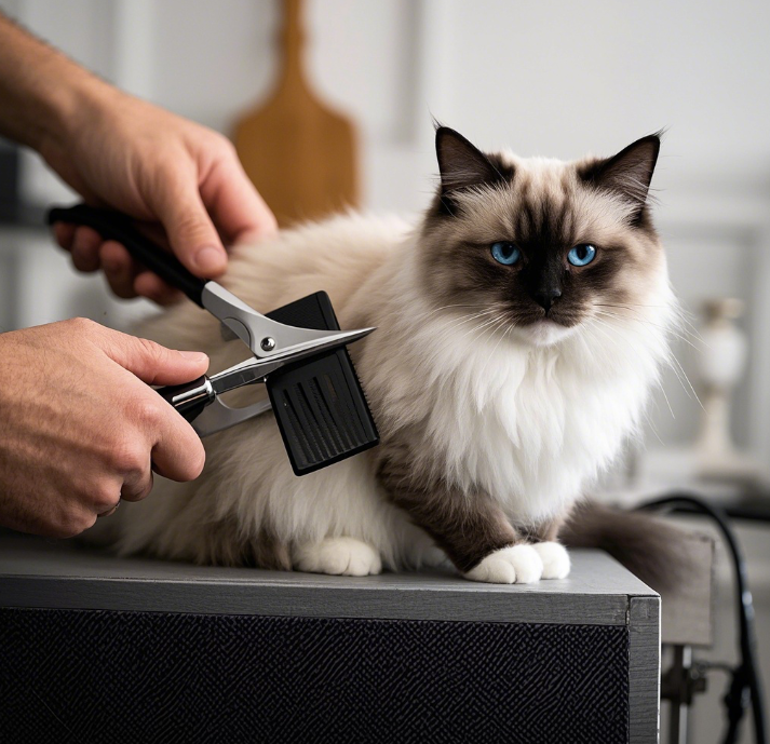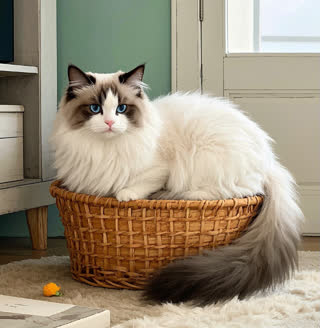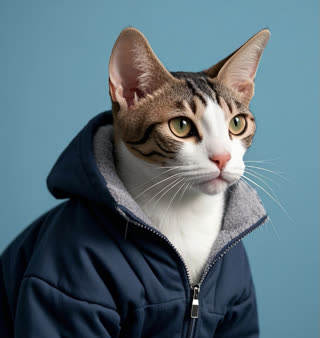1. The Ragdoll Cat Breed: Origins and Characteristics
Coat: Semi-long, silky fur with minimal undercoat, reducing shedding compared to long-haired breeds.
Color Patterns: Seal, blue, chocolate, and lilac points, often with white markings (e.g., mitted or bicolor).
Temperament: Laid-back, sociable, and dog-like loyalty, making them ideal for families and first-time owners .
2. Debunking the Hypoallergenic Myth
Lower Fel d 1 Levels: Studies suggest Ragdolls produce less Fel d 1 than some other breeds, though individual reactions vary .
Reduced Shedding: Their single-layer coat sheds less than breeds like Persians, minimizing dander spread .
Grooming Habits: Ragdolls groom less frequently than other cats, potentially reducing saliva residue on their fur .
While Ragdolls aren’t hypoallergenic, their allergenic potential is often overstated. For example, the Fel d 1 protein in cats is linked to immune responses, but individual sensitivity varies widely . Allergy sufferers should spend time with a Ragdoll before adoption to gauge their reaction.
3. Allergy Management Strategies for Ragdoll Owners
a. Grooming and Coat Care
Regular Brushing: Use a stainless steel comb or rubber grooming mitt to remove loose hair and dander 2–3 times weekly .
Bathing: Bathe your Ragdoll every 4–6 weeks using a hypoallergenic shampoo to reduce allergen buildup .
Nail Trimming: Keep nails short to prevent scratching furniture and spreading dander .
b. Environmental Control
Air Purifiers: Use HEPA filters in bedrooms and living areas to trap allergens .
Frequent Cleaning: Vacuum carpets, wash bedding, and wipe surfaces weekly to remove dander .
Allergy-Friendly Zones: Designate bedrooms as cat-free areas to reduce nighttime exposure .
c. Medical Solutions
Antihistamines: Over-the-counter medications like Claritin or Zyrtec can 缓解症状.
Allergy Shots: Consult an allergist for immunotherapy to build tolerance .
4. Ragdoll Cat Care and Health Considerations
a. Grooming Needs
Coat Maintenance: Despite their long fur, Ragdolls require minimal grooming—weekly brushing is usually sufficient to prevent mats .
Dental Care: Brush teeth daily to prevent periodontal disease, a common issue in the breed .
Ear Cleaning: Check ears weekly for wax buildup and clean gently with a vet-approved solution .
b. Health Issues
Hypertrophic Cardiomyopathy (HCM): A genetic heart condition requiring annual screenings .
Polycystic Kidney Disease (PKD): Regular ultrasounds can detect this inherited disorder .
Obesity: Monitor calorie intake and provide interactive toys to prevent weight gain .
5. Ragdoll Cats vs. Other Hypoallergenic Breeds
| Breed | Fel d 1 Levels | Shedding | Grooming Frequency | Temperament |
|---|---|---|---|---|
| Ragdoll | Moderate | Low | Weekly | Affectionate, calm |
| Siberian | Low | Moderate | Daily | Playful, sociable |
| Russian Blue | Low | Low | Weekly | Reserved, intelligent |
| Sphynx | Moderate | None | Daily skin cleaning | Energetic, attention-seeking |
6. Common Misconceptions About Ragdolls and Allergies
- Myth 1: "Ragdolls Don’t Shed."
Fact: While they shed less than some breeds, Ragdolls still require regular brushing to manage loose hair . - Myth 2: "Their Fur Doesn’t Carry Allergens."
Fact: Allergens like Fel d 1 are present in saliva and dander, not just fur. Grooming reduces but doesn’t eliminate exposure . - Myth 3: "Allergy Symptoms Disappear Over Time."
Fact: Tolerance varies. Some owners acclimate, while others require ongoing management .
7. Conclusion: Are Ragdolls Right for Allergy Sufferers?
Consult an Allergist: Get tested to confirm sensitivity before adoption.
Choose a Reputable Breeder: Look for breeders who screen for HCM and PKD .
Start Early: Introduce grooming and allergen-reducing habits when your Ragdoll is a kitten .










